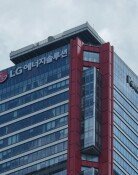Japan to release contaminated Fukushima water into sea
Japan to release contaminated Fukushima water into sea
Posted October. 17, 2020 08:03,
Updated October. 17, 2020 08:03


The Japanese government, despite fierce opposition at home and abroad, has decided to release contaminated radioactive water from the destroyed Fukushima nuclear power plant into the sea ack in 2011. Japan claims that there will be no safety issues since the contaminated water will undergo purification. Local fishermen and neighboring countries, including South Korea, however, are fiercely protesting the decision, saying some radioactive materials cannot be completely removed with current technology even though they are re-purified.
The Japanese government will make an official decision regarding the release of contaminated water at a meeting at the end of the month, Japanese media, including Mainichi Shimbun and Yomiuri Shimbun, reported on Friday. The meeting is likely to take place either on Oct. 27 or 30, when there is a Cabinet meeting. During a press briefing on Friday, Japan’s Trade Minister Hiroshi Kajiyama said that the issue cannot be left undecided and the government will make sure to draw a conclusion on the matter.
The Fukushima nuclear plant has been producing 170-180 tons of contaminated water every day with cooling water mixing with rainwater and groundwater since the plant was wrecked by the massive earthquake in March 2011. Japan has treated contaminated water with the Advanced Liquid Processing System (ALPS) and stored them in storage tanks at the plant site. A total of 1.23 million tons of contaminated water were stored in tanks as of Sept. 17. The need for discharge has increased with the storage tanks forecast to be full (1.37 million tons) by October 2022.
Although Japan has refrained from making direct comments, it has been using the media to choose ocean discharge, which is the easiest disposal method, over the costly installation of more tanks or environmentally controversial atmospheric discharge. As a part of its efforts, Japan is calling the radioactive water that has undergone the ALPS process “treated water,” instead of “contaminated water.”
Japan’s ocean discharge plan has come under fire due to its safety issue. The Tokyo Electric Power Company (TEPCO), the operator of the Fukushima nuclear plant, examined 890,000 tons of purified water in 2018 and found that 84 percent, or 750,000 tons, still contained radioactive materials, such as cesium and strontium, that exceed the release standard. Environmental experts point out that tritium cannot be removed with current technology even though the contaminated water undergoes the ALPS process.
“With the health and safety of Korean people as our top priority, we will pay close attention to Japan’s disposal activities and come up with measures based on cooperation with the international community,” South Korea’s Foreign Ministry said on Friday. The South Korean government has discussed the issue at the vice-minister level under the lead of the Office for Government Policy Coordination but is finding it hard to gain sympathy from the international community.
bsism@donga.com · aurinko@donga.com




![라면 5만 개 끓여 보며 성능 테스트… “무인점 라면 조리기 95% 차지”[유레카 모멘트]](https://dimg.donga.com/c/138/175/90/1/wps/NEWS/IMAGE/2025/12/27/133042717.4.jpg)

